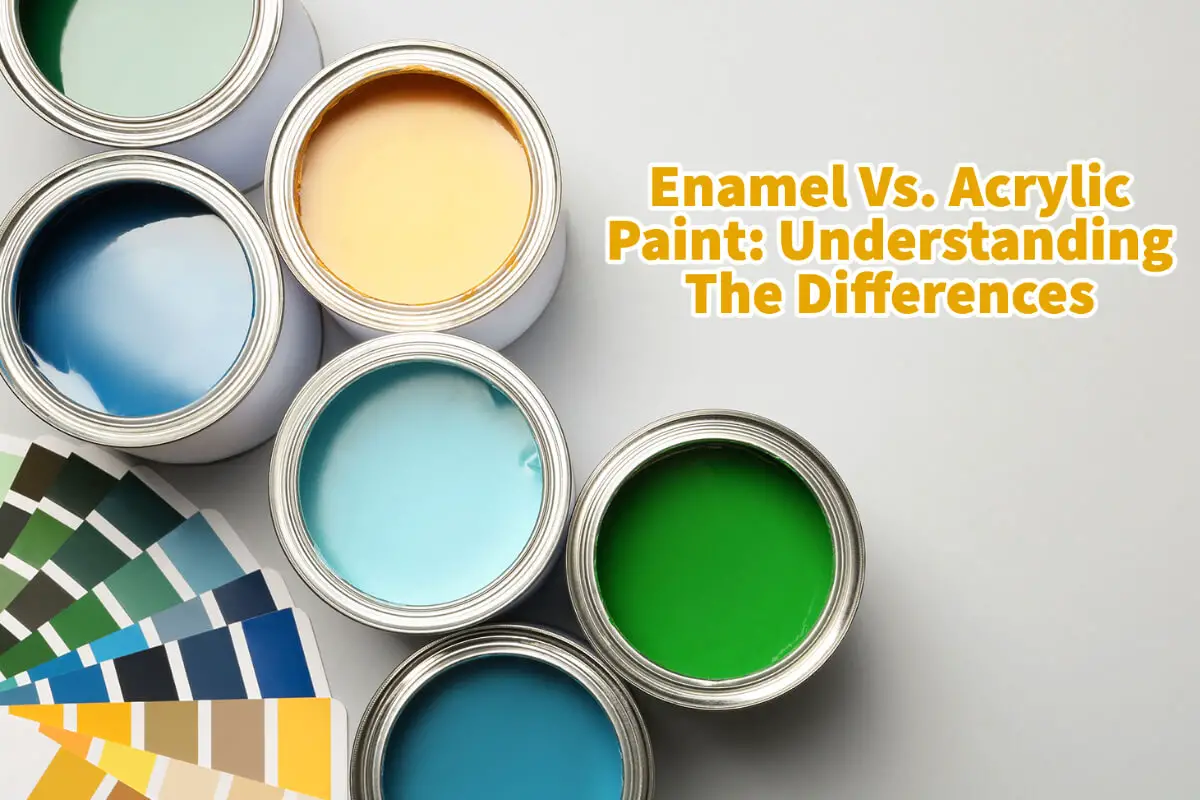Painting is a popular way of decorating homes, vehicles, and furniture. However, different paints suit different surfaces and applications, particularly enamel vs. acrylic paint.
Enamel paint and acrylic paint are two of the most popular types of paint. But even though they are two prevalent forms of paint, they also have some set differences. Understanding these differences is essential, as choosing the right type of paint for your project can significantly affect your finished product’s overall look and durability. That is why at Mondoro, we look at this carefully when deciding which paint is best for which type of products and productions.
Table of Contents
- What Is Enamel Paint?
- What Is Acrylic Paint?
- Enamel Paint Vs. Acrylic Paint, Some Of The Differences Explained
- Enamel Paint Vs. Acrylic Paint – Base
- Enamel Paint Vs. Acrylic Paint – Drying Time
- Enamel Paint Vs. Acrylic Paint – Application
- Enamel Paint Vs. Acrylic Paint – Durability
- Enamel Paint Vs. Acrylic Paint – Color Retention
- Enamel Paint Vs. Acrylic Paint – Toxicity
- Enamel Paint Vs. Acrylic Paint – Clean up
- Enamel Paint Vs. Acrylic Paint – Flexibility
- Enamel Paint Vs. Acrylic Paint – Cost
- Enamel Paint Vs. Acrylic Paint – Availability
- Advantages And Disadvantages Of Enamel And Acrylic Paint Explored
- Frequently Asked Questions About Enamel and Acrylic Paints
- Related Content
What Is Enamel Paint?
Enamel paint is a type of oil-based paint that has a rugged, glossy finish. It is made by adding resin to oil-based paint, which makes it more durable and resistant to scratches, stains, and water.
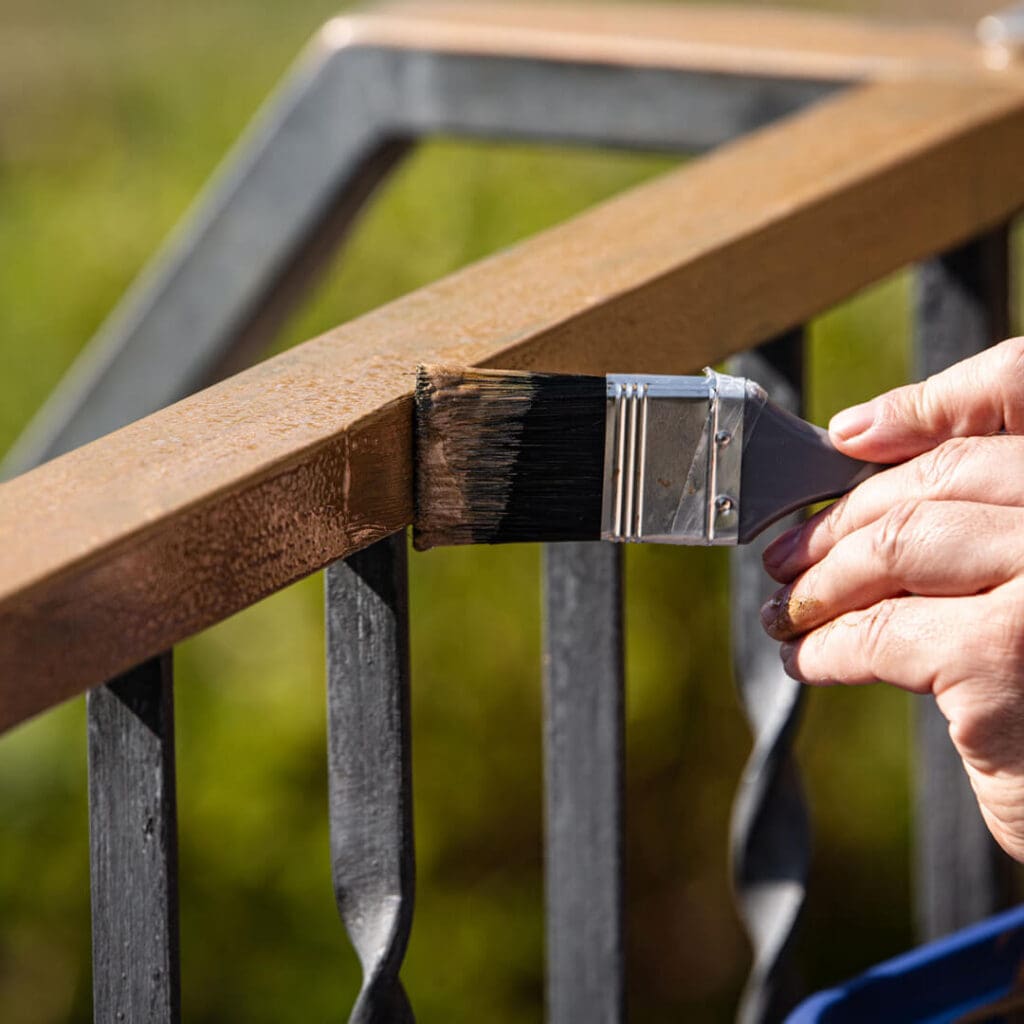
Enamel paint is often used for painting metals, woodwork, and ceramics. It is available in various colors and finishes, including gloss, semi-gloss, and matte.
What Is Acrylic Paint?
Acrylic paint is a type of water-based paint that contains a synthetic resin called acrylic. It dries quickly and has a flexible, matte finish. Acrylic paint is suitable for painting on various surfaces, including canvas, paper, wood, and plastic.
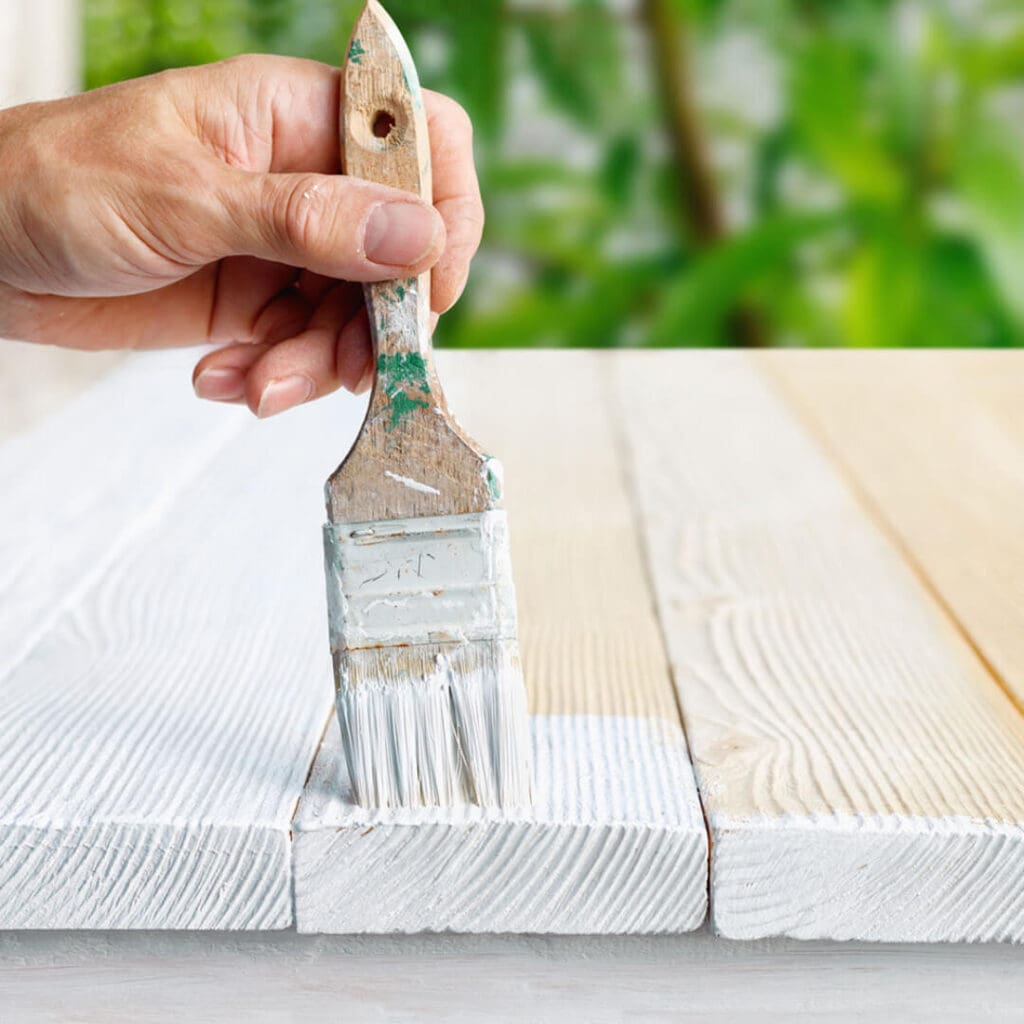
Acrylic paint is available in various colors and finishes, including gloss, matte, and metallic.
Enamel Paint Vs. Acrylic Paint, Some Of The Differences Explained
Enamel paint vs. acrylic paint may have some similarities but also vast differences. Here are some significant differences between these two different kinds of paint.
Enamel Paint Vs. Acrylic Paint – Base
Enamel paint is oil-based, while acrylic paint is water-based. This means that enamel paint requires mineral spirits or turpentine to clean up and thin, while acrylic paint can be cleaned up and thinned with water.
Enamel Paint Vs. Acrylic Paint – Drying Time
Enamel paint takes a longer time to dry than acrylic paint. Enamel paint can take up to 24 hours to dry, while acrylic paint can dry in as little as 15 minutes.
Enamel Paint Vs. Acrylic Paint – Application
Enamel paint requires a bit more skill and experience to apply than acrylic paint. It is thicker and needs to be applied in thinner layers, while acrylic paint can be applied in thicker layers.
Enamel paint also tends to leave brush strokes and requires more coats for full coverage.
Enamel Paint Vs. Acrylic Paint – Durability
Enamel paint is more durable and resistant to scratches, stains, and water than acrylic paint. It is often used for outdoor applications and painting surfaces that require high protection, such as metal and woodwork.
Enamel Paint Vs. Acrylic Paint – Color Retention
Enamel paint retains its color better than acrylic paint. It is less prone to fading and can maintain its color for extended periods, especially when exposed to sunlight.
Enamel Paint Vs. Acrylic Paint – Toxicity
Enamel paint contains solvents that can be toxic and emit strong fumes. Using enamel paint in a well-ventilated area or wearing a mask when painting with it is essential. Acrylic paint, on the other hand, is non-toxic and safe to use.
Enamel Paint Vs. Acrylic Paint – Clean up
Enamel paint requires mineral spirits or turpentine to clean up, which can be messy and time-consuming. Acrylic paint, on the other hand, can be easily cleaned up with water and soap.
Enamel Paint Vs. Acrylic Paint – Flexibility
Acrylic paint is more flexible than enamel paint. It can bend and stretch with the painted surface, making it ideal for painting on surfaces that expand and contract, such as fabric and plastic.
Enamel Paint Vs. Acrylic Paint – Cost
Enamel paint is generally more expensive than acrylic paint. This is because it requires more time and effort to produce and is often used for high-end applications.
Enamel Paint Vs. Acrylic Paint – Availability
Acrylic paint is more widely available than enamel paint. It can be found in most art supply, craft, and home improvement stores, while enamel paint may only be found in specialized stores.
Advantages And Disadvantages Of Enamel And Acrylic Paint Explored
Enamel and acrylic paint are two different types of paint with advantages and disadvantages. Enamel paint is more durable, has better color retention, and is suitable for painting on surfaces requiring high protection.
However, it is more toxic, takes longer to dry, and requires mineral spirits or turpentine for cleanup. Acrylic paint, however, is non-toxic, dries quickly, and can be easily cleaned up with water. It is also more flexible and is suitable for painting on a wide range of surfaces. However, it is less durable and can fade over time.
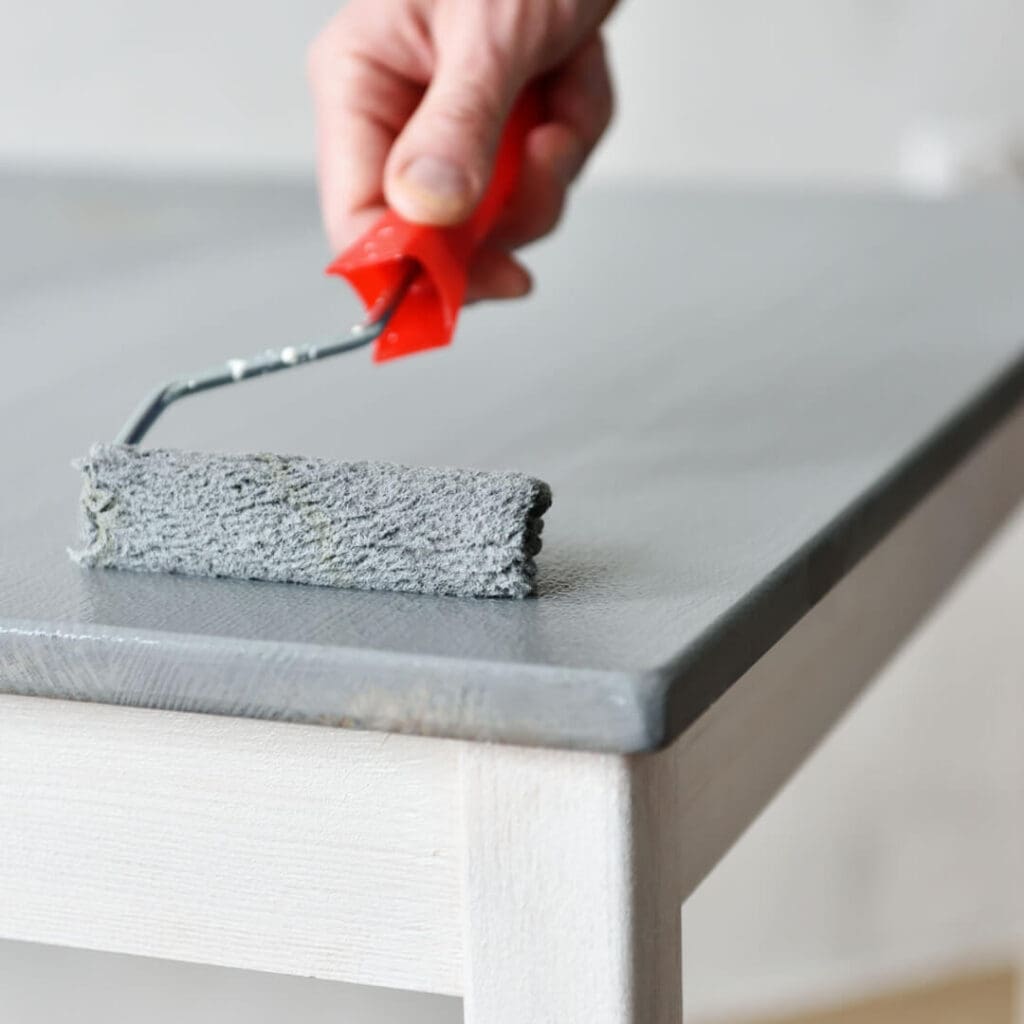
When choosing between enamel paint and acrylic paint, you must consider the surface you are painting, the level of protection required, and the application process. Enamel paint is best suited for outdoor applications and surfaces that require a high level of protection, while acrylic paint is suitable for a wide range of surfaces and applications. If you are a beginner, acrylic paint may be easier to work with, while experienced painters may prefer enamel paint for its durability and finish.
Understanding the differences between enamel paint and acrylic paint can help you make an informed decision when painting your next project. Whether you choose enamel paint or acrylic paint, follow the manufacturer’s instructions for the best results and always use proper safety precautions when handling paint.
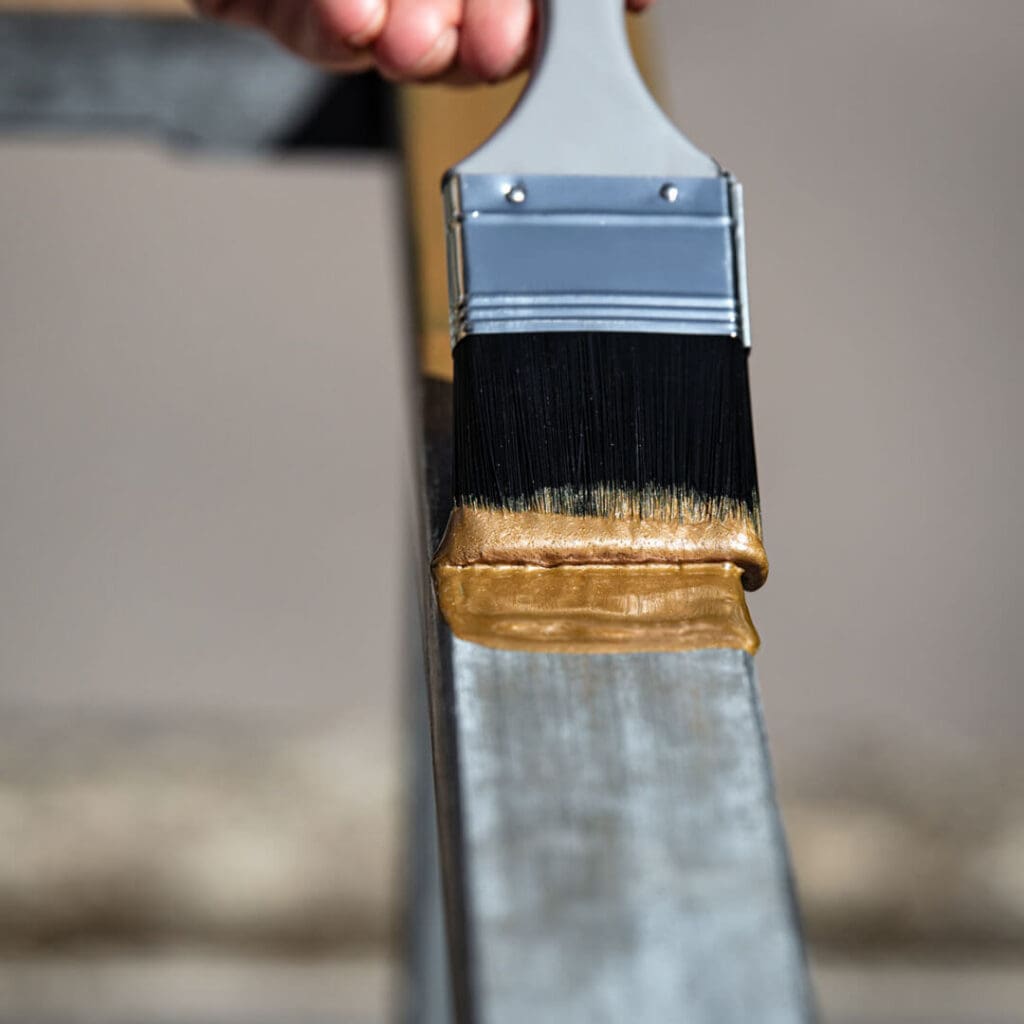
When you are looking for a supplier that can help you manufacture products using the correct type of paint, Mondoro would love to be your partner in Asia.
To learn more about how Mondoro can help you create, develop, and manufacture excellent home decor and home furniture products – don’t hesitate to contact me, Anita. Check out my email by clicking here or become a part of our community and join our newsletter by clicking here.
Mondoro gives out a FREE Lookbook to anyone interested. You can receive a copy of our latest Lookbook by clicking here.
Listen to our Podcast called Global Trade Gal. You can find it on all major podcast platforms. Try out listening to one of our podcasts by clicking here.
Subscribe to our Mondoro Company Limited YouTube Channel filled with great videos and information by clicking here.
Frequently Asked Questions About Enamel and Acrylic Paints
Is enamel paint better than acrylic paint for furniture?
Enamel paint is generally better than acrylic paint for furniture, as it is more durable and provides better protection against scratches, stains, and water.
Can enamel paint be used over acrylic paint?
Enamel paint can be used over acrylic paint, but the surface must be prepared and primed first.
Can you mix enamel paint and acrylic paint?
Mixing enamel and acrylic paint is not recommended, as they have different chemical properties and may not adhere correctly.
Can you use acrylic paint over enamel primer?
Yes, acrylic paint can be used over enamel primer, but the surface must be prepared and primed first.
Can enamel paint be used on plastic?
Yes, enamel paint can be used on plastic, but a plastic primer must be used first to ensure proper adhesion.
Is enamel paint more expensive than acrylic paint?
Enamel paint is generally more expensive than acrylic paint, requiring more time and effort.
Can enamel paint be used indoors?
Enamel paint can be used indoors, but it should be used in a well-ventilated area or with a respirator mask due to the strong fumes it emits.
Can acrylic paint be used on metal?
Yes, acrylic paint can be used on metal, but a metal primer must be used first to ensure proper adhesion.
Can enamel paint be thinned with water?
No, enamel paint cannot be thinned with water. It must be thinned with mineral spirits or turpentine.
Can you use acrylic paint over a clear enamel coat?
Using acrylic paint over a clear enamel coat is not recommended, as the surface must be prepared and primed first to ensure proper adhesion.
Related Content
How to Manufacture Vietnamese Lacquerware?
Vietnamese lacquer requires many manufacturing steps in the lacquer production process, including making the base, preparing the lacquer base to be applied, and finally, applying the lacquer paint onto the surface. Every piece must be carefully sanded to give it a very smooth surface. Vietnamese lacquerware production requires a lot of skill and knowledge.
To learn more, you can read How to Manufacture Vietnamese Lacquerware? An Insider’s Guide to Lacquer by clicking here.
What is Gold Leafing Used in Home Decor Products?
The gold leaf is hammered gold. Some gold leaf manufactured today is hammered, copper, or gold mixed with other metals and alloys. The gold leaf is manufactured by gold beating. The process of gold beating is to beat or press the gold into fragile sheets of paper.
You can discover more by reading What is Gold Leafing Used in Home Decor Products? by clicking here.
Home Interior Mirror Ideas, Manufacturing Home Decor Mirrors
Many Interior designers use mirrors to help them with their decorating. This is because a mirror can become a design focal point for any room. A mirror can help brighten a dark space and make a room look larger.
You can learn more by reading our blog, Home Interior Mirror Ideas, Manufacturing Home Decor Mirrors, by clicking here.

